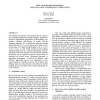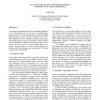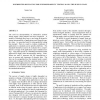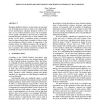WSC
2008
14 years 6 months ago
2008
For simulation practitioners, the common steps in a simulation modeling engagement are likely familiar: problem assessment, requirements specification, model building, verificatio...
WSC
2007
14 years 6 months ago
2007
I summarize my experience from having taught simulation to over 7000 students for over 30 years; to undergraduate, graduate and Ph. D. business students, executives and high schoo...
WSC
2007
14 years 6 months ago
2007
The need for interoperability of information systems among supply chain partners has been recognized. A number of standards have been or are being developed to ensure interoperabi...
WSC
2007
14 years 6 months ago
2007
Using models in different contexts poses major integration challenges, ranging from technical to conceptual levels. Independently of each other developed model components cannot b...
WSC
2008
14 years 6 months ago
2008
Managing healthcare delivery systems plays an important role for healthcare providers in order to have high quality service performances. Inpatient pharmacy delivery systems are o...
WSC
2007
14 years 6 months ago
2007
Commercial simulation environments offer model developers the ability to compose simulation models using generic or domain specific model constructs. Most simulation environments ...
WSC
2008
14 years 6 months ago
2008
Within the last months the semiconductor plant of Infineon in Dresden has converted to a pure manufacturer of logic products. With it, premises for production control have changed...
WSC
2007
14 years 6 months ago
2007
The automated analysis of model specifications is an area that historically receives little attention in the simulation research community but which can offer significant bene�...
WSC
2008
14 years 6 months ago
2008
Revenue management is the collection of strategies and tactics firms use to scientifically manage demand for their products and services. The practice has grown from its origins i...
WSC
2007
14 years 6 months ago
2007
Adaptive Time Warp protocols in the literature are usually based on a pre-defined analytic model of the system, expressed as a closed form function that maps system state to cont...




